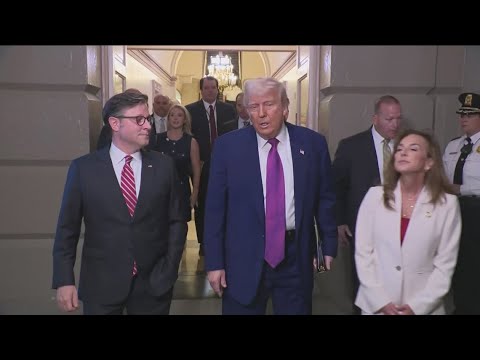Future of Federal Student Loan Programs on the Line Amidst Cuts

The landscape of federal student aid in the United States is facing significant upheaval as proposed budget cuts and sweeping policy reforms threaten to reshape the way students fund their education. With Congress debating a federal spending bill that includes deep cuts to student loan programs, educators, advocates, and borrowers are raising alarms over what could be a dramatic shift in higher education access and affordability.

Sweeping Budget Cuts to Loan Programs
At the heart of the controversy is a budget bill recently passed in the U.S. House of Representatives and currently under consideration in the Senate. The bill proposes eliminating several cornerstone federal loan options, including subsidized loans, which don’t accrue interest while students are in school, and the Grad PLUS program that supports graduate and professional students.
The bill also proposes revising the way annual borrowing limits are calculated, potentially tying them to the gap between college costs and Pell Grant awards. This could result in many students being eligible for significantly lower loan amounts. Aggregate borrowing caps would also change, reducing the lifetime total students can borrow—except for certain categories like professional programs in medicine or law, which would see higher limits.
The legislation also removes the distinction between dependent and independent students, equalizing loan limits between the two categories but reducing the overall amount available for independents, who typically receive more funding under current rules.
Concerns in the Medical and Professional Fields
These changes are particularly concerning for institutions and students in medicine, law, and other professional programs. Around 80% of osteopathic medical students, for example, rely heavily on federal loans to finance their education. Professional associations warn that if students are forced to rely on private loans—which generally lack income-driven repayment plans and forgiveness options—it could discourage qualified low-income students from pursuing careers in critical fields like healthcare.
This could have long-term implications. The Association of American Medical Colleges has already projected a physician shortage of up to 124,000 by 2034, particularly in primary care and underserved communities. Critics of the bill argue that it contradicts the national need for a larger healthcare workforce and makes progress toward health equity even harder.
Changes to Repayment Plans and Forgiveness Programs
The proposed bill would also consolidate the number of federal repayment options into just two: a fixed standard repayment plan and one income-driven repayment (IDR) plan. If passed, this would eliminate popular IDR plans like SAVE, PAYE, and ICR, many of which offer lower monthly payments based on income and family size.
The Public Service Loan Forgiveness (PSLF) program would also be modified under the new proposals. For students who take out loans after July 1, 2026, work performed by medical residents in nonprofit hospitals would no longer count toward forgiveness. This change could disincentivize public service careers in healthcare, law, and education—all sectors that rely on graduates with high debt loads.
Efforts to Dismantle the Department of Education
Parallel to the changes in loan policy is a larger political battle concerning the very structure of federal education oversight. The Trump administration has renewed its push to dismantle the U.S. Department of Education. Secretary of Education Linda McMahon has reportedly been directed to coordinate the transition of the department’s responsibilities to other agencies—transferring student loan management to the Small Business Administration and handing over special needs and school nutrition programs to the Department of Health and Human Services.
However, a federal appeals court recently blocked this move, upholding a lower court ruling that declared the department’s dissolution unconstitutional. The court also ordered the reinstatement of over 1,300 Department of Education employees who had been laid off during the attempted shutdown.
Resumption of Student Loan Collections
Amid these sweeping changes, the Biden-era pause on federal student loan collections officially ended in early 2025, and borrowers in default have begun receiving notices. Many are confused about their status, unsure about repayment options, and concerned about being forced into unaffordable payment plans at a time when policy changes are still unfolding.
State officials and consumer advocacy groups have warned that the transition has not been accompanied by adequate communication or support services, leaving millions of borrowers vulnerable to missteps and misinformation.
What’s at Stake
With budget negotiations still underway, the fate of the federal student loan system hangs in the balance. Lawmakers from both parties are expected to propose amendments in the coming weeks, though partisan tensions may complicate progress. Student advocacy organizations have begun organizing rallies and social media campaigns to pressure lawmakers into preserving key aspects of the federal loan and forgiveness systems.
If the bill is passed in its current form, it will mark one of the most significant overhauls to student financial aid in decades—potentially redefining who gets to attend college and how they pay for it.
For millions of students and families, the future of higher education affordability may soon depend not just on grades or test scores, but on the decisions made in Washington over the next few weeks.








